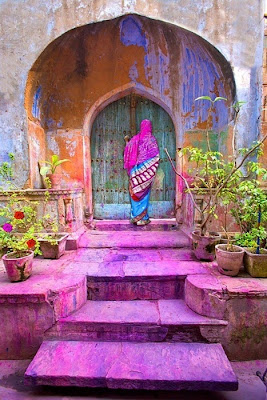MOROCCAN INTERIOR DESIGN STYLE CAN GIVE ANY ROOM OR HOME A WARM AND FRIENDLY, LIVED-IN AND WELCOMING AURA.
Moroccan Interior Design is about color, texture, and fluid lines.
This design style draws much of its inspiration from the Islamic design of the east and from the shapes and colors of the rolling sands of the desert.
Wherever you find this style, its intricate beauty seduces.
Moroccan design incorporates bold colors, such as fuchsia, royal blue, deep purple, and vibrant red, with the soothing neutral colors of the desert, such as sand, taupe, beige, and shades of white. Bold accent walls and fabrics are common in this design style.
TEXTURES:
Texture is important in Moroccan design. Just some of the many textures of the interior design theme are rough stucco walls, smooth silken tapestries and ceramic tiles, and rugged carved wood chests and tables. Contrast is the goal here, as with a rough wooden table topped with a smoothly-polished brass tray.
STRUCTURAL ELEMENTS OF MOROCCAN INTERIOR DESIGN:
Traditional Moroccan homes are made of stucco with wooden beams and supports. The homes are commonly white-washed and gleam in the bright Saharan sunlight. Few right angles exist in Moroccan design. Doorways and windows are arched or shaped in the traditional Islamic key-hole design.
Ceramic and mosaic tile also plays an important part in Moroccan design. These brightly patterned tiles are used to frame doors and windows, as table tops, and on accent pieces, such as mirrors, picture frames, and wall art.
TEXTILES:
The textiles of Moroccan interior design are those than drape and flow. Silks, gauze-like fabrics, and drapery sheers are commonly used to divide rooms, to frame windows, and to throw across furniture. These fabrics are typically in rich, bold colors, such as those discussed above. Textiles are also important as floor coverings, often seen in woven Kilim rugs.
FURNITURE:
Furniture in Moroccan design is a combination of delicately-carved wooden pieces and plush over-stuffed upholstered ones. Tables are frequently topped with inlaid tile designs or topped with large brass or copper trays. Upholstered pieces include reclining couches, usually draped with fabric and accented with colorful pillows. Over-stuffed ottomans are frequently used as an accompaniment to chairs and sofas.
ACCESSORIES:
Accent pieces also reflect the Islamic and Asian influence on Morocco. Rugs are commonly made of woven silk and wool Asian designs, and range from full room size to smaller prayer rugs. Lamps are often hung from the ceiling and are commonly made of metals, such as brass and copper. Other popular Moroccan style accents include mirrors, often framed in metal or wooden with an Islamic design. Also common are brightly-colored pottery, to hang on the wall, use as serving vessels, or as decorative lamps.





































0 коментара:
Post a Comment